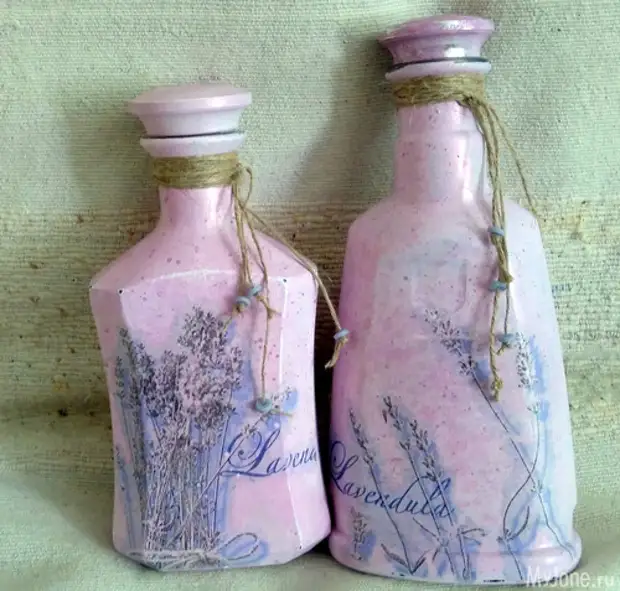
Glass bottles are one of the most eco-friendly packages for food liquids. Many of us remember the USSR, when the packaging was "deposited". In other words, the bottles could be passed back to the store or special stall and get back their cost, which is included in the price of the goods. Children in those times happily handed over bottles, it was a good way to earn their own money. Now, in the era of disposable dishes and the domain of plastic packaging, many developed countries are administered a ban on the import of polyethylene packages into their countries. The paper packaging is returned and again appears on the shelves of milk in glass bottles ....
I spontaneously appeared a retreat from the topics of the master class to re-use glass bottles in everyday life. Earlier, I already told how you can decorate bottles in the technique of decoupage. Here such a set was given to a colleague at work:
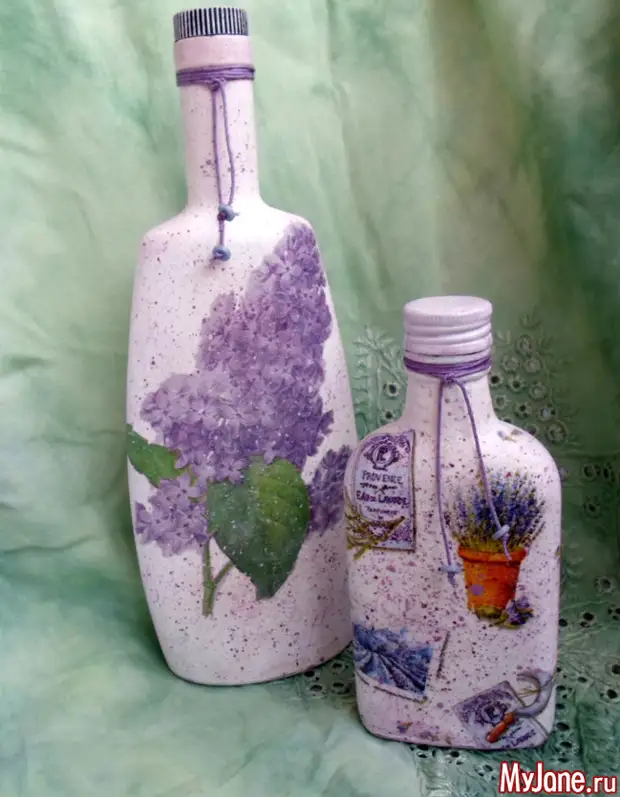
It was she who asked me to take two more bottles in the same color scheme. What is not the question: we save the style, but change some decorative techniques.
We need:
- 2 glass bottles;
- white acrylic paint and a kel for acrylic paint color of lavender;
- Enamel acrylic pearl;
- Acrylic transparent varnish, zapon varnish, PVA glue;
- Synthetic flat tassel, sponge, sandpaper shallow grain, rigid brush brush or unnecessary toothbrush;
- Jute rope;
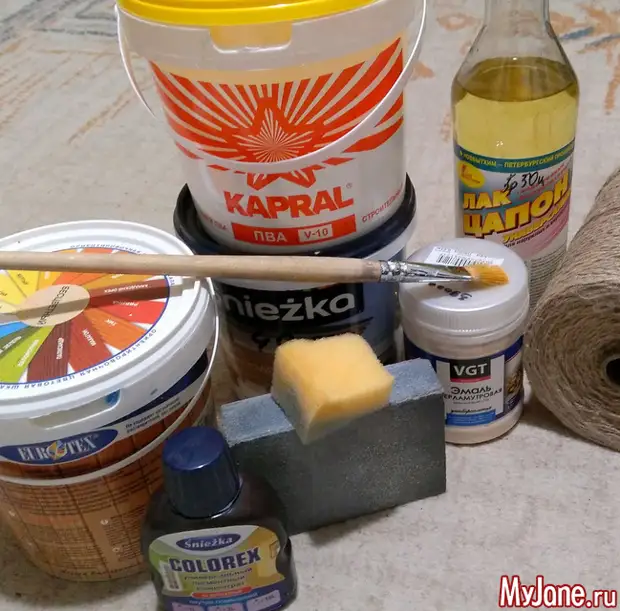
- several lavender colors beads;
- Paper napkins with lavender pattern.
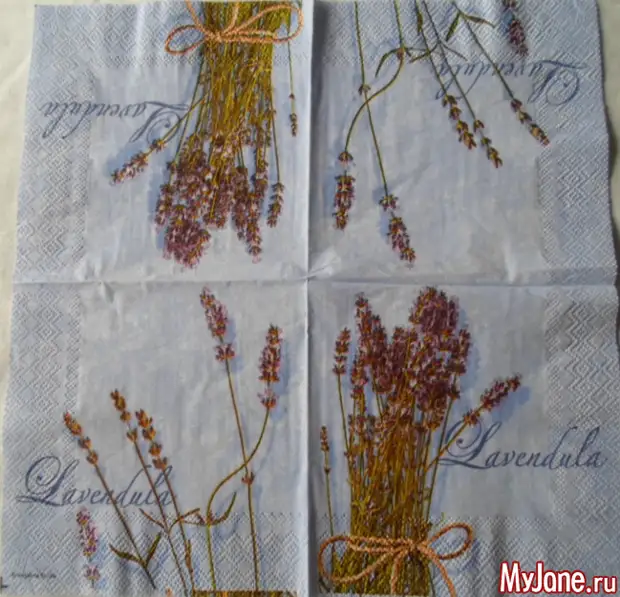
Bottles are soaked in hot water and remove the labels, if necessary, wash with dishwashing liquid. After the bottles are dried, cover them with a sponge of white acrylic paint.
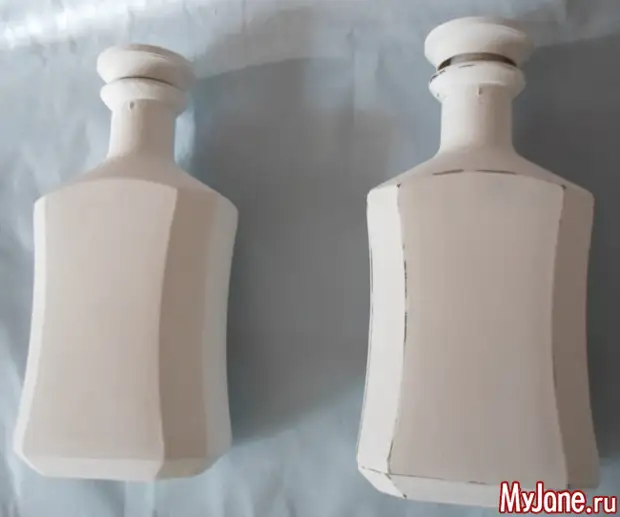
I usually make a blank (soil) a lot of bottles, I don't always take pictures, so the top photo is like a sample of the primed bottles.
It is necessary to apply a few thin layers of paint, each of them is thoroughly dried, polished with sandpaper, wipe the dust formed and only after such a processing applied the following layer.
At the next stage, toning the bottles with a color lavender color. I did not set a goal to paint the background with a solid layer, I wanted to get a more complex texture. On a plate (palette) we apply a little white paint and a number of one-day koller, we recruit the paint to the paint with the kelper and chaotically apply to the surface of the bottle. If you wish, you can enhance the effect of spray reception: we applix a bit of a brush ring or toothbrush, spend on a bristle with your finger, directing the splashes on the bottle. After drying, the paint is applied by a layer of pearl enamel. Envy.
Do not forget to clean the sandpaper possible irregularities.
We pull out the fragments of the pattern from the napkins and with the help of a flat synthetic brush and the PVA glue, diluted with half water, glue them to the bottle. Envy.
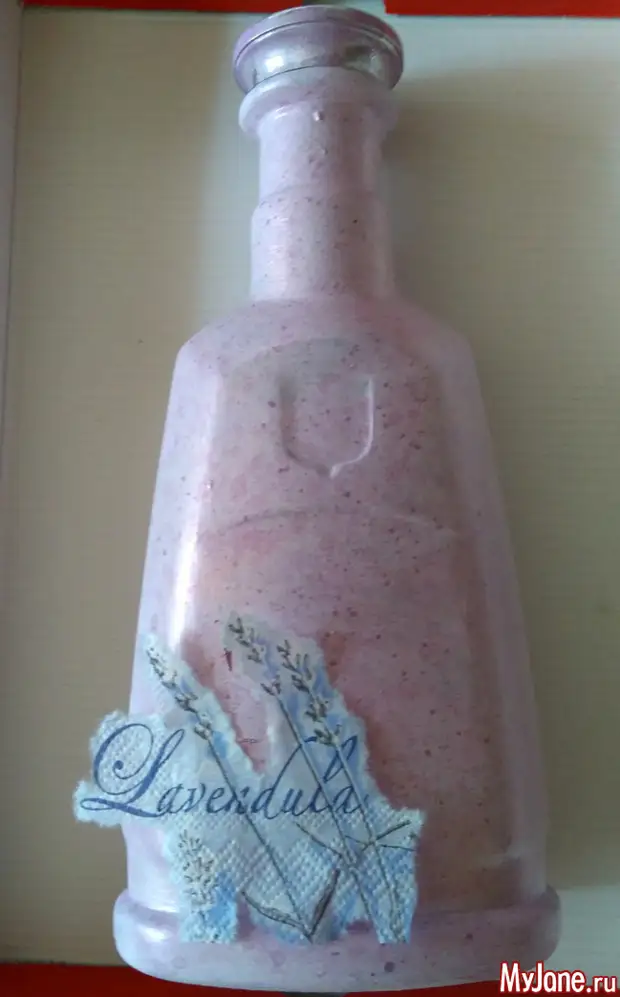
Covered by several layers of acrylic varnish. If you suddenly, wrinkles were formed on the napkins, at this stage they can be sanded by sandpaper.
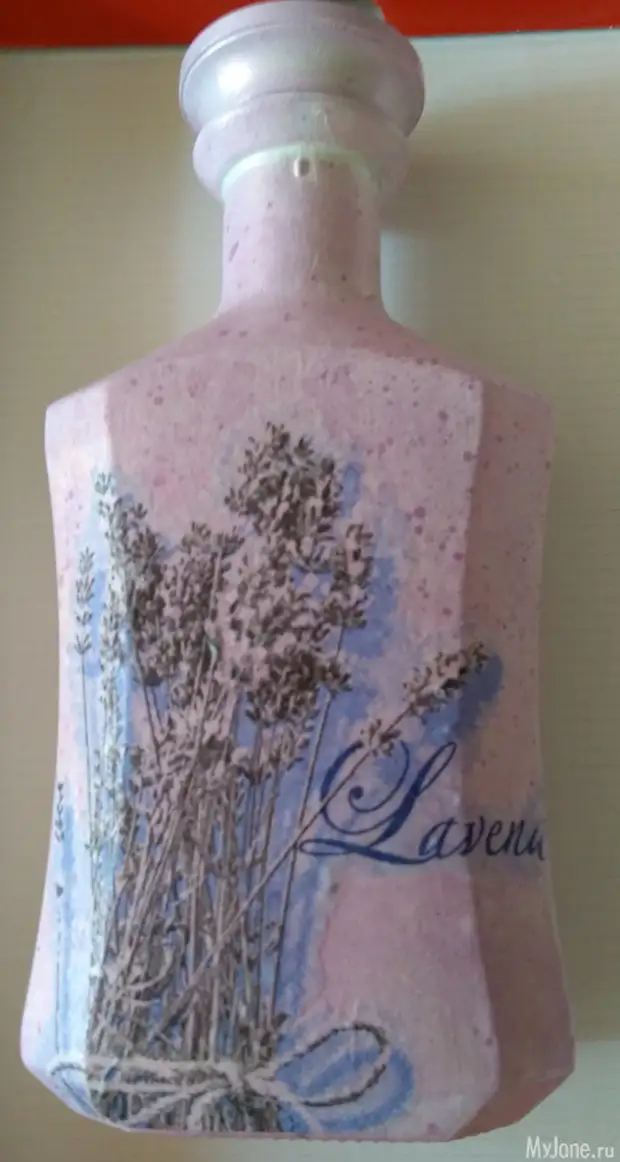
After drying acrylic varnish, we apply a layer of varnish "Tsaron". This varnish waterproof, which is important for us, as bottles are intended for storing food fluids, they can be soaked. Please note that this varnish smells unpleasantly, so I recommend using it in the fresh air (on the balcony). After drying, the smell is not observed.
We wake on the neck of the bottles of the rope.
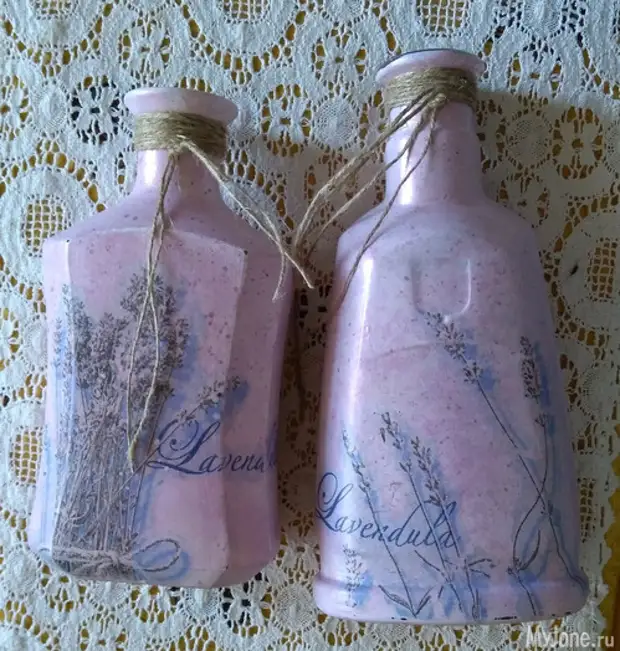
We insert the ends of the rope into suitable beads and fix nodules.
In such bottles, you can safely store food products, placing them on open shelves - thanks to the paint, the contents are protected from the effects of light (as you know, fats are oxidized). Bottles also play the role of interior decoration.
